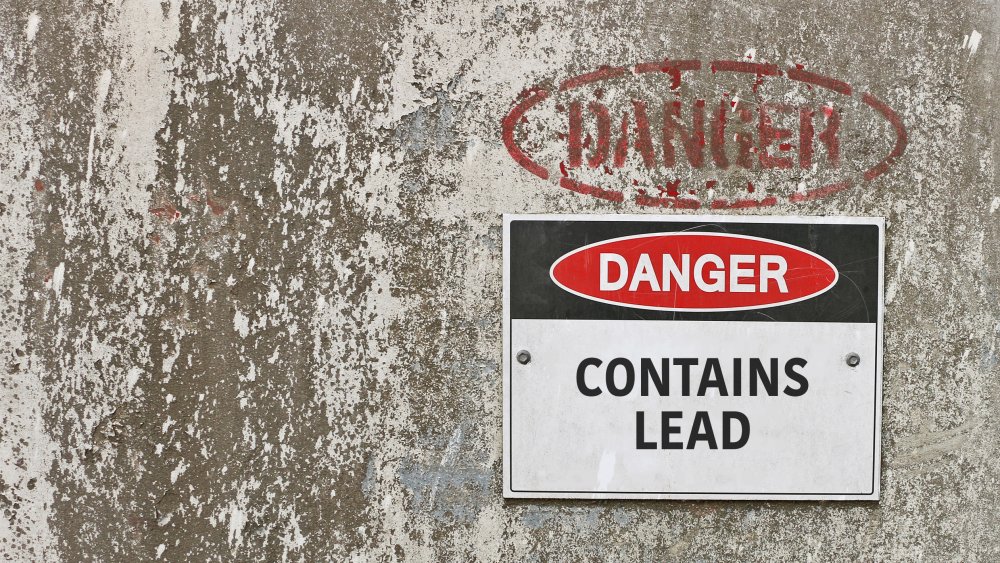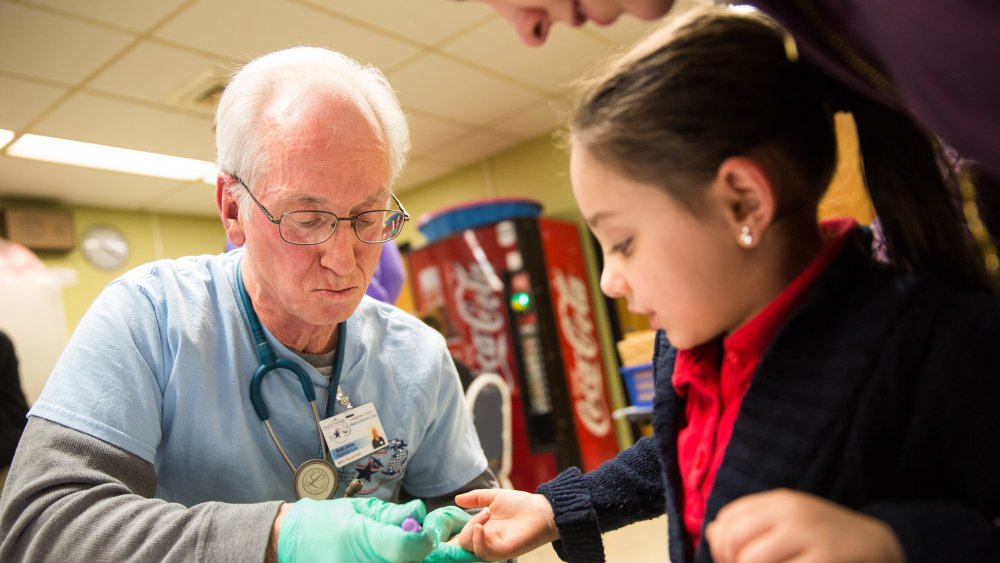The Real Reason Fewer Kids Are Undergoing Lead Testing
While for the past few months we've all been focused on the most immediate aspects of the COVID-19 crisis, that is, how we can do out best to avoid catching or spreading the infection, by now physicians are starting to see the pandemic's far-reaching health impact in areas that have nothing to do with the virus itself. As hospitals and doctor's offices nationwide were swamped with patients who either suspected they had or were diagnosed with coronavirus, many people either chose (or were forced) to skip routine checkups. This was of particular danger when the patients were children since it meant that many were missing out on important vaccinations.
Not only does CNN Health report that many kids are going unvaccinated, but they also note another problem that's becoming apparent — no annual checkups means no lead testing. Lead testing is of particular importance in communities where children often live in older homes with exposed lead-based paint or in cities such as Pittsburgh, Chicago, or Milwaukee, where civic water supplies may contain dangerous levels of lead (via WXYZ).
Why lead testing is crucial for kids
Lead testing, which CNN Health says usually consists of a finger or heel prick, is typically performed as part of a routine well-child visit for all 1- and 2-year-olds. If a blood analysis shows any sign of elevated lead, early intervention kicks in right away to identify the source of the lead and to attempt to correct the problem before any serious behavioral, learning, or health effects can be felt. The fact that fewer pediatrician visits result in fewer lead tests being performed also means that there are fewer lead home inspections taking place and fewer parents being educated about possible signs and consequences of lead poisoning
The CDC estimates that approximately 1/2 million kids aged 5 and under have dangerously high amounts of lead in their blood, and, as CNN points out, lead poisoning disproportionately affects communities of color as it tends to be more of a low-income urban area problem. What's more, pandemic sheltering in place meant that kids spent less time in childcare or school and more time in the home, a place that Yvonka Hall, co-founder of the Cleveland Lead Safe Network, says is the main source of lead danger.
While the CDC and local health authorities are struggling to catch up with missed lead testing, many kids are still expected to fall through the cracks. We may never know how many have been affected until they start struggling in school a few years down the road.


